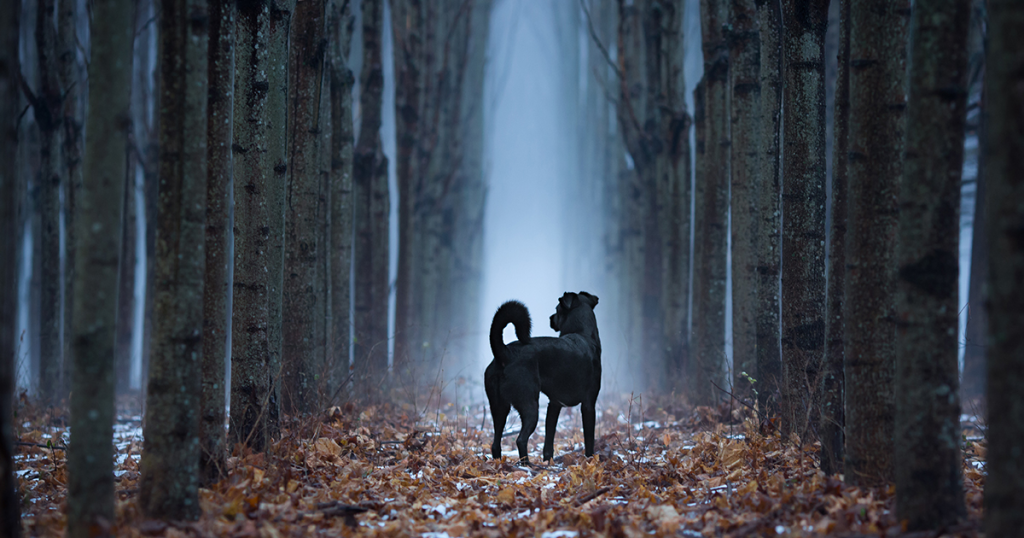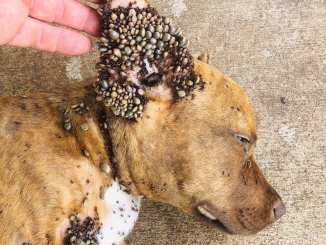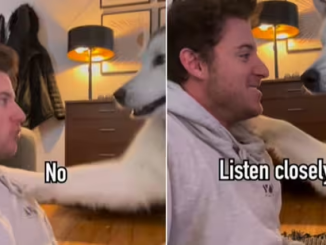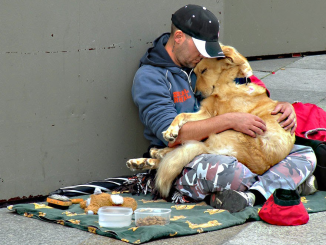Amaryllises are popular flowers for the holidays. They start appearing on store shelves in gift and growing kits in the fall when the holiday displays go up. They make great gifts for houseplant and gardening enthusiasts, but they are also popular as alternative (or complementary) Christmas and New Year’s decorations.

If decorations and displays are what you’re after, and you want to have your amaryllis blooming for holiday decorating, you’ll need to plan ahead and plant ahead.
When Do You Plant Amaryllis for Christmas Blossoms?

Amaryllis grow quickly and can flower anywhere between four to eight weeks after they are planted. The average is around six weeks. It’s wise to start planting in early to mid-November if you want the plant to be flowering for Christmas.
Here are some tips for a successful blooming planting:
- Amaryllises need to feel a root or pot bound to the flower. Plant your bulb(s) in a pot no bigger than one inch larger than the bulb (measured at the widest point of the bulb)
- The pot should be twice as tall as the bulb so the roots have enough room to grow
- It’s important that the pot has drainage holes
- Plant in a good quality potting mix
- An amaryllis planting kit should have all you need to start the bulb and the pot will be the right size
- The bulbs should not be completely covered—about one-third of the bulb’s top should be sitting above the soil
- When you first plant your bulb, take it to the sink and thoroughly water the plant until the soil is wetted all the way through
- Leave the pot in the sink for an hour or so to allow all excess water to drain, then put the pot on a saucer and move it to a place with bright, indirect light
- Do not overwater amaryllis bulbs
- Let the top of the soil dry out between waterings.
- Amaryllis prefers a cooler room over a warmer room (around 65 F or 18 C)
Plant More than One Bulb for More Reliable Blooms

Each amaryllis blossom will last for about two to three weeks. And of course, we can plan the best we can, but everyone’s growing conditions are a little different in their home, and plants will do what each individual plant naturally does.
Doing what comes naturally, of course, means the bulbs can have a little bit of a mind of their own. If you really want to hedge your bets for blossoms for Christmas (and potentially through New Year’s), plant more than one bulb.
- The number of flowers that one bulb grows is related to the bulb size
- Choose larger bulbs for more flowers
- Flower stalks may also grow and bloom successively, so large bulbs with more flower stalks also increase the chances of having flowers for the holidays
Plant in Succession to Hedge Bets for the Right Bloom Time

Another way to increase the likelihood of having your amaryllis bulb blossom when you want it to is to plant a few bulbs in succession.
Plant one or more bulbs every week or every two weeks. If you choose to do this, start earlier than November—mid to late October—and plant weekly or biweekly through the month of November.
At the very least, you’ll have a long succession of blooms to enjoy over many weeks. If you plant every week, you have the best chance of hitting the holidays just right.
If you plant every two weeks, you should have at least one flower in bloom consistently for as many bulbs as you started. That could mean well over a month of beautiful blooms!
- Amaryllis bulbs can be on the more expensive side, but with good aftercare, your bulb can bloom again
- Kits make planting easy, but you often can’t inspect the bulb in kits
- Bare amaryllis bulbs are cheaper, and you may be able to pick through to find the best (if you’re buying in person at a garden center or store)
- You can usually get two blooms per year; then the plant needs to die back from its foliage to store energy to grow again
- You can just be done with the plant after the first bloom and let it go dormant if you don’t care to manage it that much
Plant Different Varieties to Increase the Odds

Different varieties of amaryllises have different growing and bloom times, so you can increase your chances of having blossoms on Christmas Day (or New Year’s Day, or both) by planting more than one variety.
Pick out a few that strike your fancy.
- Amaryllis bulbs can be put into dormancy after they die back
- You can save them and regrow them for many years
- You will have the widest variety of flowers by shopping for single bulbs and not kits
Fertilize Regularly to Boost Blooms

To speed up blossoming and give the plant what it needs to support those large flowers, fertilize your amaryllis every time you water it.
Start giving the bulb fertilizer in its water when you see new green growth poking out of the bulb (some bulbs come already sprouting, so fertilize those when you pot them—flowering takes a lot of energy out of a plant).
Even newly purchased amaryllis bulbs should be fertilized.
- Use a water-soluble fertilizer
- Phosphorous is what promotes blossoming in amaryllis, so choose a fertilizer with a high phosphorous content
- On the fertilizer label, phosphorous (abbreviated as “P”) will be the middle number
- For example, if the label has three numbers like 15-30-15, the middle number is the phosphorous content—the 30
- Phosphorous content should be at least as high as the other two, preferably higher
- Mix the fertilizer at half the strength recommended on the label and feed it every time you water once the plant starts growing
- Do not overwater amaryllis, or the bulb will rot
- Only water when the top inch of soil is dry
- Avoid pouring water on the neck of the bulb (the exposed part above the soil)
A Few Final Tips to Keep Amaryllis Looking Lovely

- Amaryllis grow quickly and bend toward the light, so turn the bulb every day or two, so it grows evenly and straight up
- Stalks are tall, and flowers are heavy—they can be anywhere from four to ten inches in diameter
- You may need to stake the flower stalk to keep it from bending
- Give your amaryllis a pretty topiary look by gently tying or wiring the flower stalks together at the top
- Tying also helps the stalks support each other
- You can tie flower stalks together on the stake, too, which hides the stake and lends support
- Sellers are now offering unique waxed amaryllis bulbs that are ready to grow and require no watering–an interesting option!
- Amaryllises make great gifts—give kits or start some ahead to give as grown and flowering plants
- A beautiful, blooming amaryllis is the perfect holiday hostess gift

- Paperwhites are smaller but much-loved Christmas flowering bulbs, too
- Paperwhites grow similarly and in about the same bloom time as amaryllis (a little quicker)
- They complement amaryllis nicely, either together in one pot as a holiday bulb garden or set together in separate pots
- If you’re not sure if you have time to get your amaryllis to bloom exactly when you want it to, or if your started bulbs are taking longer to bloom than expected, buy a fully grown plant that is in flower at the time you want it
- You can still save the bulb from flowering full plants after it’s done to regrow for reblooming or to save for next year
Can pets see ghosts?

Spooky season is in full swing, meaning there may be some heightened paranormal activity afoot. In fact, a survey conducted by YouGov revealed that two in five Americans believe ghosts are real, while one in five people say they’ve actually encountered one.
The existence of ghosts may be up for debate, but one of the most persistent beliefs is that our animals can sense spirits or paranormal activity. We’ve all witnessed the scene in scary movies or TV shows, when the tiny dog barks at the door but no one is there. Sure, the movie may be fake, but many pet owners have noticed their dog or cat do the same in real life.
Of course, there’s only one thought that enters a pet owner’s mind when this occurs – that their animal is obviously interacting with a ghost. To set the record straight, we spoke with two animal communicators – aka, pet psychics – to learn whether our animals are really channeling the other side.
Why do we believe our pets can see ghosts in the first place? According to Phoebe Hoffman, an animal communicator and intuitive guide based in New York City, it has a lot to do with their heightened senses.
“Pets are living off of energy, whether it’s our energy or energy that we are not privy to, because we’re so limited in our senses compared to them,” Hoffman tells us. “Now, can I say that what they’re seeing is ghosts? I don’t know that because I’ve never seen a ghost. I’m not seeing what they’re seeing, but I’ve had many experiences with my own animals – which happen to be cats – where they are having an absolute moment with something that’s there that only they can witness.”

It goes without saying that animals have senses that are unknown to humans. When it comes to our beloved canines, dogs have the ability to hear much higher-pitched noises than their owners. The average adult human can’t hear sounds above 20,000 Hertz (Hz), while dogs can hear sounds as high as 47,000 to 65,000 Hz, per the American Kennel Club.
Meanwhile, cats are known to have great eyesight, especially in the dark. According to Texas A&M University, felines can dilate their pupils in low-light settings and they have a special reflective layer called the tapetum lucidum, which can reflect more light to the back of the eye.
“Non-human animals sense things in different ways than humans do. Cats, for instance, the way they see things is different from the way humans see things. Their eyesight is different, they can definitely perceive energies that we can’t or things that aren’t visible to the human eye,” Olivia LaBarre, an animal communicator and Reiki specialist based in NYC, tells us. “Most of the animals I communicate with have increased senses beyond the five senses.”

But what about those undeniable moments when our dog or cat appears to be reacting – or interacting – with something we can’t see? When they begin to bark or meow at nothing visible, stand in the corner, play with an object that belonged to a deceased family member, or assume behaviours that are characteristic of a former pet? For LaBarre – who’s been an animal communicator and grief worker for five years – her clients have noticed that, after one of their pets dies, their living animal will even start taking on some of the behaviours of the animal who passed.
When these moments occur, it’s important to look out for certain signs or signals that your dog or cat’s behaviour has suddenly shifted. This can look like playing with something that isn’t there, tilting their head, arching their back, or wagging their tail.
As for what pet owners should do when they believe their beloved animal is interacting with a ghost, experts agree to just sit back and let it happen. “Allow it, observe it, and just pay attention because it might be about you. Humans are very unaware of the mysteries of the universe. Animals, they’re tapped in. They are aware that energy doesn’t die,” says Hoffman. “Just let it happen. It’s not a bad thing.”
However, there could be the slight off chance that a poltergeist from the next Paranormal Activity instalment just so happens to be living in your kitchen. Then, of course, it’s time to call in the experts… or an exorcist.
Our pets’ heightened senses – and sometimes their silly, quirky, and erratic behaviour – has played into the belief that dogs and cats can see ghosts. Still, there’s much uncertainty about whether this long-standing superstition is actually true.
“We are so limited in our ability to see what the naked eye cannot see. Animals have this window into watching spirits and energy,” says Hoffman. “But as far as a ghost? That I don’t know, but I know they’re seeing something.”
Although it continues to be a mystery whether our pets’ senses are able to pick up on energies or spirits, pay close attention to your dog or cat this spooky season. Who knows what life forms will be lurking this Halloween?



Leave a Reply